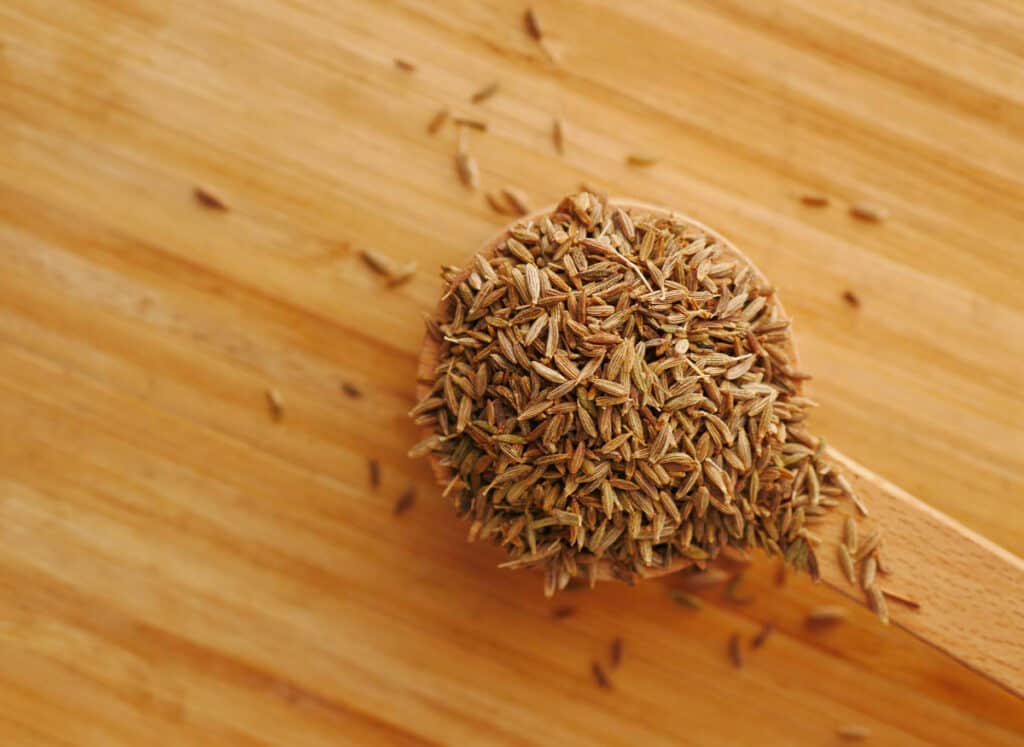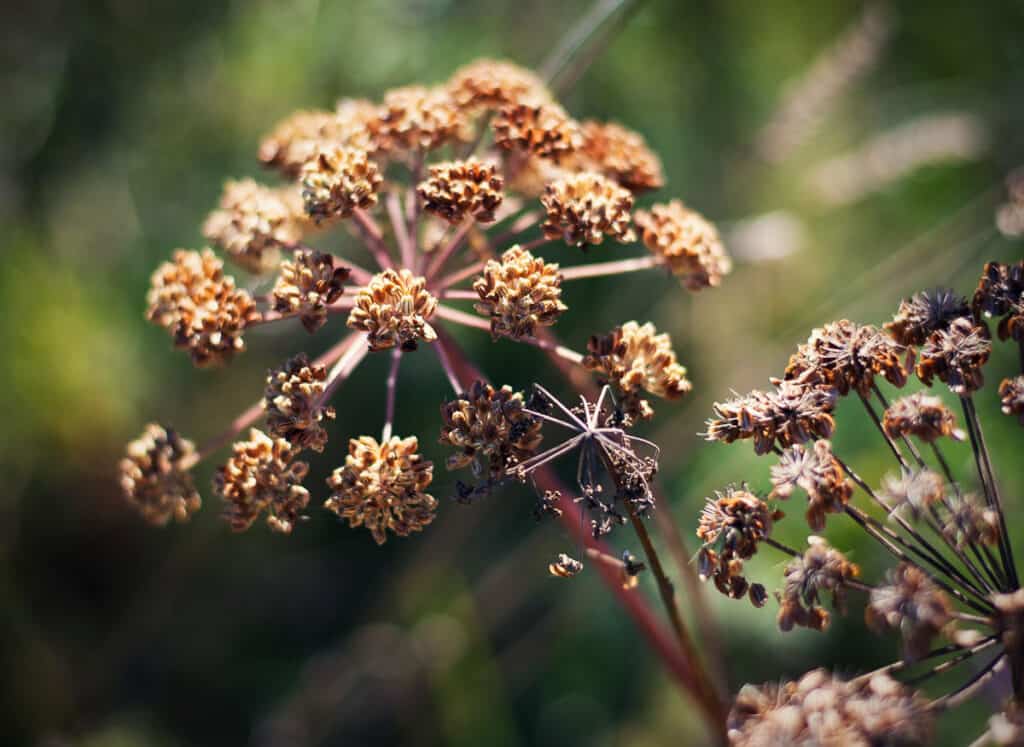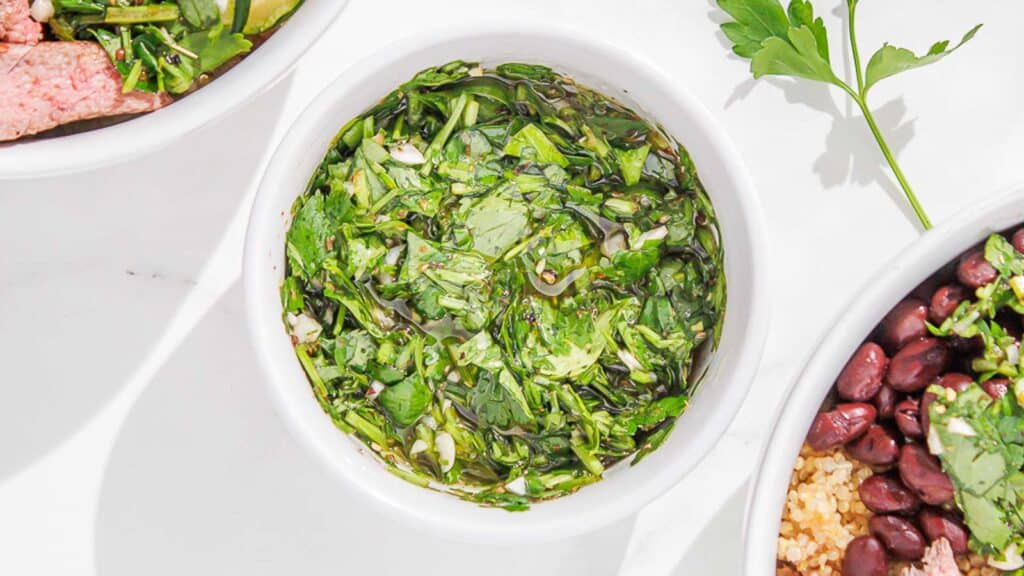Cumin seeds come from the Umbelliferae or cumin plant, which is part of the parsley family. They are used in spice mixes, cooking and garnishing dishes. You can roast, grind or use them whole. Cumin has a smoky, savory and slightly sweet flavor that adds a distinct taste to dishes across many cultures.

Selecting cumin
Cumin is a hard, drought-tolerant plant that thrives in soil with good drainage and full sunlight. It can tolerate high temperatures and low moisture conditions.
When the flowers of the cumin plant turn into seed pods, they change color to brown, which means they are ready to be collected. Remove them from the plant and allow them to dry, then rub the seed pods to remove the seeds.

If you don’t have an outdoor garden to grow your cumin plants, you can buy cumin seeds or ground cumin from your local grocery store or spice shop. When buying spices, be sure they are stored in an airtight container. Cumin seeds should be brown in color, small, oblong and ridged. Ground cumin should be a rich, earthy brown and have a strong, distinctive aroma typical of cumin.
Spice shops offer an advantage, particularly if they offer spices in bulk. This way, you will be able to smell the spices prior to buying them.
Avoid packages with discolored seeds or powder. Packages should also be free of excess moisture or any signs of mold.
The taste of cumin
Cumin has a unique taste that is a combination of smokiness, nuttiness and slight bitterness. It is savory with a mild sweetness that includes peppery undertones and a citrusy brightness.
“Cumin is a versatile and delicious spice used in many cuisines. I prefer to use whole cumin seeds and give them a light toast in a dry frying pan prior to grinding them into a powder. Freshly ground cumin imparts a warm, smoky, citrusy, bright flavor to anything from meats such as lamb and beef, to potatoes, curries and more.”
— Michelle C, Sift and Simmer
Cleaning cumin seeds
Unlike fresh herbs like parsley or basil, you do not need to wash cumin seeds under running water. You can remove any dirt or debris from your seeds with your fingers. Whether you harvested them from your garden or bought them from the store, they are ready to store after doing this.
Storage suggestions
If you have harvested your own seeds, keep them in a sealed, airtight container in a cool, dry spot like your pantry. They should stay good for about six months.
If you purchased the seeds, just keep them in their original container. Like mustard seeds, cumin seeds should be stored in a cool, dry place to maintain their texture and flavor.
You can also freeze cumin seeds. Just keep them in their original package or label a sealed, freezer-safe container with the date. They will stay good for about a year.

Culinary uses for cumin
As a robust spice, cumin is commonly used to add flavor to various dishes as a seasoning. Toasting cumin seeds can enhance their smoky, nutty flavor. Ground cumin can also be incorporated into sauces, curries and spice blends to add depth of flavor.
“Cumin is a go-to spice in my house and I use it in everything from the base of homemade fajita seasoning to a Tex-Mex scrambled egg dish. It pairs well with other bold flavors and enhances the overall depth of any dish.”
— Shelby, Fit As A Mama Bear
Add cumin to spice blends, like Cajun blackening spice, and use the blend on everything from blackened steak to blackened chicken sandwiches. Be sure to try cumin in spice blends from various cultures, like Baharat, Garam Masala, Ras el Hanout and Za’atar as well.
Cumin is delicious in soups and salad dressings. It is a flavorful addition to a variety of sauces and condiments, like baba ghanoush, hummus, some fresh salsas and Argentinian chimichurri.
“I can never seem to keep cumin in our pantry for very long. I use it in everything from Indian butter chicken to taco meat and homemade chili to vegetable soup. Cumin always helps to accentuate savory flavors while adding complexity to meat dishes. It also brings out the subtle sweetness of root vegetables. It’s a must-have for anyone’s spice rack.”
— Susannah Brinkley Henry, Feast + West

Cumin is used in many cuisines. Indian, Mexican, Middle Eastern, North African, Latin American, Mediterranean and Southwestern American dishes all utilize this spice.
Final thoughts
Cumin plants are drought-resistant flowering plants that produce seed pods. The seeds have a pungent flavor that is citrusy, nutty, smoky and savory. This flavor can be enhanced by toasting the seeds. You can also grind the seeds and use the powder as a seasoning.
Cumin is available year-round at grocery stores, spice shops and markets. Ensure the containers are airtight and contain no signs of mold or moisture. The spice should be an earthy brown color and be fragrant.
Store seeds or ground cumin in an airtight container in a cool, dry place. They can also be frozen for up to a year.
Try cumin in spice blends, sauces, curries, salad dressing, marinades, salsas and condiments like hummus and chimichurri. It is an excellent seasoning for everything from roast meats and vegetables to homemade chilis and soups.
If you are hosting a dinner party with foodie friends or just trying something new, consider including cumin in your dishes. You will be sure to love the savory, smoky, citrusy flavor it adds to many delicious dishes from cuisines across the globe.
Gen La Rocca is a professional chef, writer and editor living in Southern California. She is the owner and recipe creator behind Two Cloves Kitchen, a food site featuring contemporary, California-inspired recipes. She has edited over 20 novels, short stories and essays for publication.